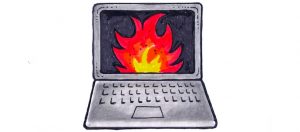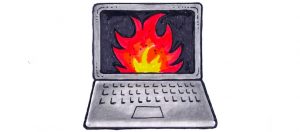
By Julianne Tveten
In These Times (12/20/17)
Defying widespread popular objection, on December 14 the Federal Communications Commission (FCC) voted to repeal net neutrality. The principle regulates broadband as a utility, thus forbidding cable companies and Internet service providers (ISPs) from throttling, blocking or otherwise discriminating against online traffic. While net neutrality was only enacted in early 2015, it swiftly proved a key component of an open Internet.
While the assault on net neutrality is formidable, it’s not without formal opposition. The Republican-helmed FCC’s two Democrat Commissioners, Mignon Clyburn and Jessica Rosenworcel, have censured the decision and urged dissent. A number of state attorneys general—including those in New York, California, and Illinois—have vowedto sue the FCC over the ruling. Congressional Democrats, shepherded by Mass. Sen. Ed Markey, plan to file legislation to reverse the repeal.
Relying on such reactive regulatory appeals to herald the fight for a fair Internet, however, won’t guarantee one. The FCC’s revocation of net neutrality isn’t a call to merely restore the technocratic 2015 rules, but to reclaim the Internet as a public good to which all have the right to access.
It’s time to regain the digital infrastructure that could have—and always should have—been ours.
The Internet was initially a product of public spending. The U.S. Defense Department first conceived it in the 1960s, following a period of feverish technological competition with the Soviet Union. By the early 1990s, the government ceded control of the Internet to the private sector, which had the putative capacity to host its rapid growth. Since then, the transition to corporate stewardship has stratified the digital landscape and isolated disenfranchised populations.
Consider the monopolization of ISPs. Because different network providers, such as AT&T and Comcast, sell broadband to discrete geographic regions with little overlap, they have immense power to manipulate speeds and charge prohibitively expensive rates. Comcast, the nation’s largest private broadband provider, is notorious for overcharging its users and stifling speeds. Users and politicians alike echo these concerns for other ISPs on a seemingly regular basis, rendering the telecom industry one of the country’s most reviled.
Digital divide protects the rich
Such profiteering tactics have disproportionately affected low-income and rural communities. ISPs have long redlined these demographic groups, creating what’s commonly known as the “digital divide.” Thirty-nine percent of Americans lack access to service fast enough to meet the federal definition of broadband. More than 50 percent of adults with household incomes below $30,000 have home broadband—a problem plaguing users of color most acutely. In contrast, internet access is near-universal for households with an annual income of $100,000 or more.
The reason for such chasms is simple: Private network providers prioritize only those they expect to provide a return on investment, thus excluding poor and sparsely populated areas.
Previously, the government has intervened, requiring telecoms to proffer discounted service to low-income areas. These initiatives, however, have fallen short. In 2016, AT&T introduced low-cost regional broadband for Federal Supplemental Nutrition Assistance Program (SNAP) users, an FCC-mandated condition of its merger with DirecTV. To receive the service, users had to live in neighborhoods that could accommodate a minimum speed of three megabits per second (Mbps). The significant number of people whose addresses didn’t meet that criteria, meanwhile, were forced to either pay full price or forego access. (The National Digital Inclusion Alliance detailed the company’s egregious redlining of impoverished communities in Cleveland.)
City success providing internet
Chattanooga, Tenn. has seen more success in addressing redlining. Since 2010, the city has offered public broadband via its municipal power organization, Electric Power Board (EPB). The project has become a rousing success: At half the price, its service is approximately 85 percent faster than that of Comcast, the region’s primary ISP prior to EPB’s inception. …
(Commoner Call cartoon by Mark L. Taylor, 2018. Open source and free to use for non-derivative use with link to www.thecommonercall.org )

